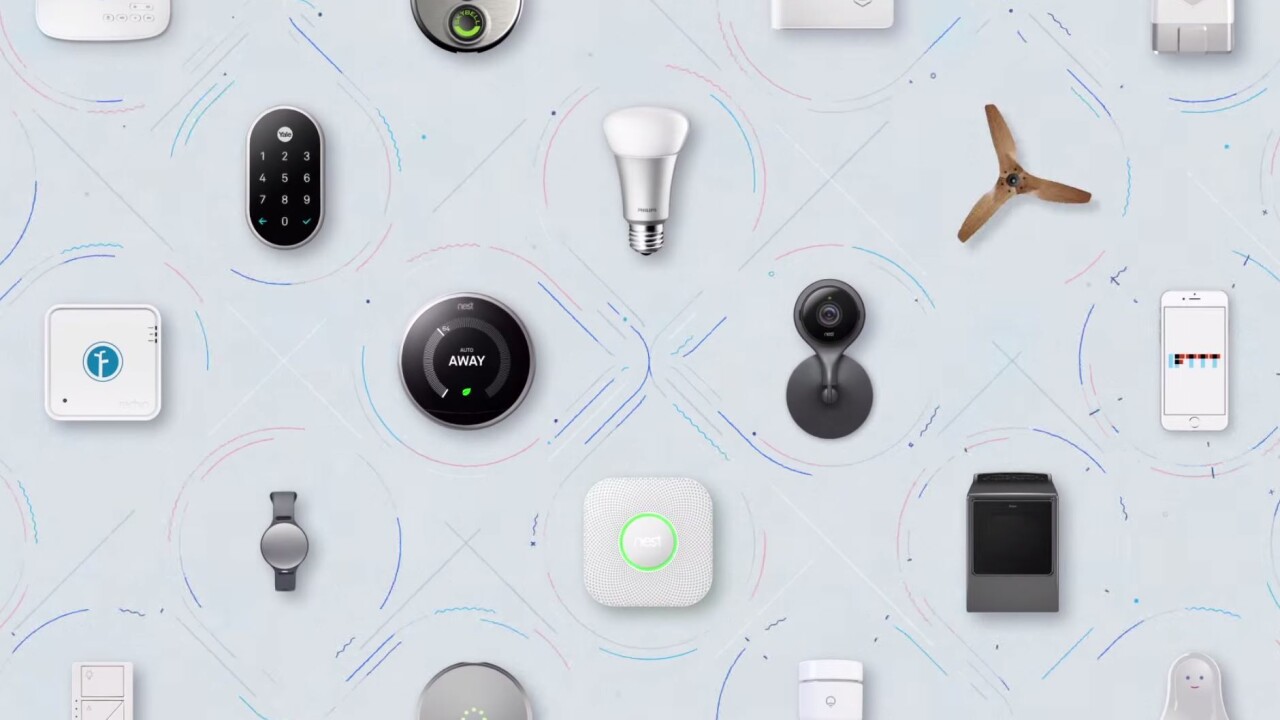
Nest today announced several updates for its third-party ‘Works with Nest’ program aimed at giving developers more options for communicating with Nest products.
First up, the company is opening up its proprietary Weave communications protocol. The technology was previously only used in Nest products, but developers can now use it to connect power-constrained devices with low latency and connection redundancies, without the need for Wi-Fi.
Nest says Weave has a several advantages over other device-to-device standards for the smarthome:
- Reliability – Nest Weave delivers reliable messaging across multiple networks. And because it runs over Thread, it can work with a secure, self-healing mesh network. So even if one device crashes or Wi-Fi goes down, other devices on the network will keep working. This is especially important for safety and security products, like smoke alarms or security systems.
- Latency – Nobody wants lag time when switching on the lights or unlocking the door. Nest Weave allows devices to talk directly to other devices so they can interact with end-to-end latencies of less than 100ms, even over a large mesh network.
- Range – When Nest Weave runs over Thread, each powered device acts as a wireless extender to route information. That’s critical when Wi-Fi doesn’t reach every corner of the house.
- Power and size – The Nest Weave communications protocol is compact and runs on single MCU devices with as little as 64KB of RAM. And a device using Thread and Weave can run on a single battery for many years. This solves many problems for small, low-powered products.
- Security – Rather than rely on only network security, Nest Weave provides its own, independent, end-to-end application layer security. The Nest Weave security stack also has application-specific encryption keys, so a hacker can’t unlock the front door by compromising the patio lights.
- Simple setup – Pairing connected devices can be tricky. Nest Weave lets people get connected right from their smartphones using the Nest app.
And it already has several third parties lined up for Weave support, including Phillips Hue, WeMo, General Electric, iHome, Tyco and more. It also says Google’s OnHub will work with Weave soon, and that companies like Qualcomm will provide Weave kits to help Nest developers get started.
In the meantime, the first Weave product is a door lock by Yale called Linus. It connects to your smartphone via Weave so that you can use the Nest app to check whether your door is open or closed, set up different passcodes for different degrees of access, and monitor when someone leaves or enters the house. You can do this on the go, so you don’t have to worry about whether you left your apartment unlocked, or you can unlock it incase you need a friend to pick something up for you.
If you’re wondering about the difference from Google’s Weave, Nest tells us that Google’s Weave is meant to cover a more broad set of devices in the IoT space, while Nests’ is aimed at their own products and connectivity in the home. That said, the companies are working together to ensure that products will work across both platforms.
Meanwhile, the company has finally released an API for its cloud-connected Nest Cam, allowing developers to trigger different camera actions and connect it with their apps. For example, Phillips Hue light will be able to turn on automatically when the Nest Cam detects motion, and the Mimo baby monitor can set the camera to record a clip whenever the baby stirs.
For more on today’s updates, or if you’re interested on working with a Nest integration yourself, it’s worth reading though Nest’s blog post here.
➤ New ways to work with Nest [Nest]
Get the TNW newsletter
Get the most important tech news in your inbox each week.





